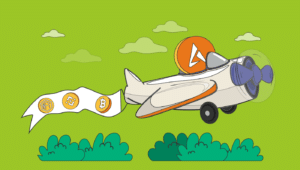While the hype in early 2021 was all about crypto art – seen as a manifestation of digital art now based on distributed databases – at the same time the real insider market was more appreciative of and trading NFTs rather than collectibles.
August 2021 was a big month of revival for Non Fungible Tokens, which saw them break every record of the much-discussed and unforgettable March 2021, touching $400m in sales for crypto art and $600m for collectibles.
A simple reading of the data shows that the collectibles market is far larger than the art market and this is further confirmed by the secondary market.
Crypto Art: Christie’s and the million-dollar sale of Beeple’s NFT
Crypto art has received more coverage in the press – both in the sector and in the major publications – thanks to Christie’s “baptism” with the million-dollar sale of Beeple, as it is more glamorous and easier to understand as an intangible and artistic asset that has found some affinities with the physical world.
The collectibles – digital collector’s items – are something different, based on scarcity, rarity, gamification and often artificial intelligence algorithms that, by combining different components, create unique and special random collections that excite collectors, but are difficult to understand for most people who are seeing Larva Labs’ now-famous Crypto Punks sold for millions of dollars without really understanding why.
The more structured art world, on the other hand, was already counting on the presence of collectors – in some cases real investors – who were already familiar with those market themes and who, amidst accumulations, rises, sometimes speculative moves – art flipping – have in any case partly “ventured” into the NFT market, although with due care.
In my latest book “Crypto Art: Everything you need to know about NFTs, Blockchain and Digital Art” I have framed what has happened in the art world and its market, highlighting how there is still much to be done, the constant evolution and the consequent opportunities to be seized by the sector, where the real rules have yet to be defined in a balance between the old and the new.
The collectibles project and the possibility of market access
With collectibles though, there is no old, only new. A market that winks at the game cards to be collected and owned, where each of us, in most cases, has the opportunity to collect the first releases on equal terms and only then discover that what has been purchased takes the form of a unique and valuable specimen.
Once the project has been announced within the crypto community or on social networks such as Discord and Twitter, the opportunity opens up to buy the collectible from the source and then to mint the NFT at a price that on average varies from 0.03 ETH to more than 2 ETH, according to different methods and timing for each collection, where often those who buy do not yet know what characteristics their NFT will have.
A very fast and volatile market, which goes through different phases in a few days or even hours, where there are those who sell even just the pre-emption to purchase. This is the case of the MintPass for MetaHero by Punks Comics, sold for 0.08 ETH to the owners of another NFT of the producer, and then put on the secondary market on OpenSea first at 2 ETH and today at 5 ETH, giving the right to one of the 10,000 NFTs soon to be put on the market and decreeing a “floor price” that promises to be stellar.
Christie’s was the first to perceive the strength and scope of the Collectibles market, with the first auction of Crypto Punk created by Larva Labs, which sold for over $11 million each, where today to get even one of the most common of the 10,000 minted, $250,000 is not enough, as investment funds and credit card merchants such as VISA rush to hoard them.
Crypto Punk, the must have of our time
Whether it’s art or not, the auctions outside of crypto continue with Christie’s Hong Kong announcing a second collectibles auction on 17 September featuring the notorious Crypto Punks this time paired with Yuga Labs’ Bored Ape Yacht Club (BAYC), the web’s most expensive bored monkeys – to date, 25 ETH is too little for the most common – set to become the next must-have by the end of this incredible year.
As a layman it is difficult to understand the dynamics – or the fascination – however, the numbers speak for themselves and above all the continuous increase of collectors who today buy, sell, exchange collectibles in some cases for innate passion, in others for mere speculation.
Increasingly, crypto art is also turning its attention to collectibles, drawing inspiration from the dynamics of rarity, scarcity and sale, as in the case of Art Blocks, whose generative art in the last two months has far surpassed other more renowned platforms such as SuperRare and Nifty Gateway with over $300 million in sales in the month of August alone, or the case of Damien Hirst, whose 10,000 NFTs of The Currency sold for $2,000 and are now the rarest in the secondary market at over $50,000.
Whether collectibles or crypto art, it is certain that the two markets take inspiration from each other, and in some cases act as a mutual media force, even if, day after day, the risk of a potential future cannibalization becomes concrete, and this is not necessarily a bad thing.
But where is the physical world in all this?
The post The future of NFTs: Crypto Art or Collectibles? appeared first on The Cryptonomist.






















